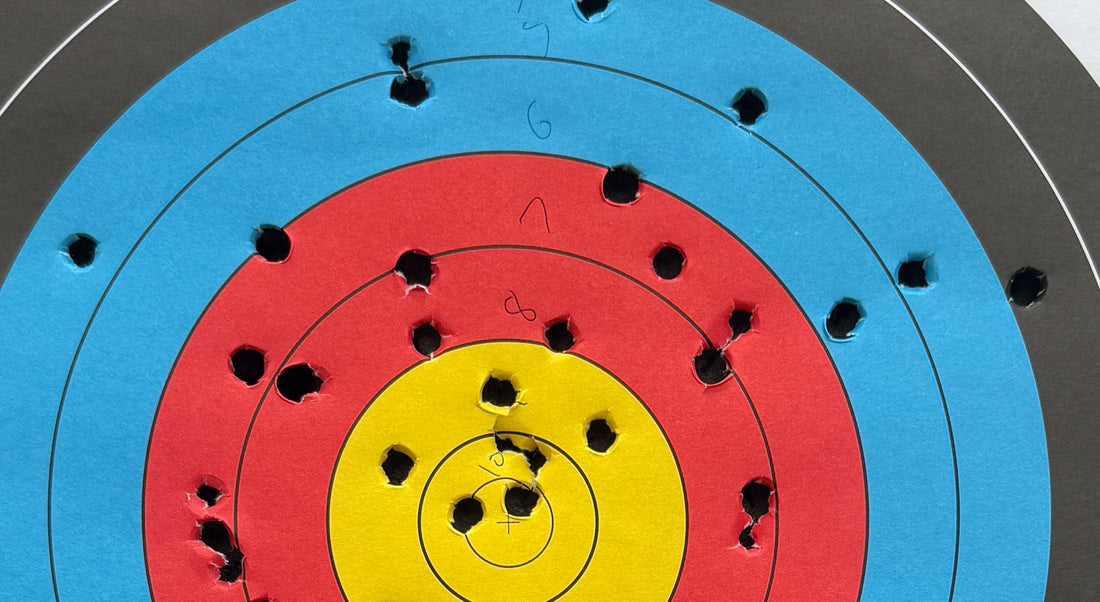
How to Call Arrows Properly: Ethics, Accuracy, and Etiquette
Compartir
In archery, precision matters—and not just in your aim. How you call arrows during a scoring round can impact results, fairness, and even the spirit of competition. Whether you're scoring your own arrows or a fellow archer's, knowing how to do it correctly is a skill every serious archer should develop.
This post breaks down everything you need to know about how to call arrows ethically and accurately, especially for self-scoring events like the Kaminski Archery Backyard Championships.
Why Arrow Calling Matters
If you've ever stared at an arrow and thought “Is that in, or just barely out?”, you're not alone. Close calls happen often. But calling an arrow incorrectly—whether due to bias, carelessness, or pressure—can result in unfair scores and diminish the integrity of the sport.
That’s why every archer should know the rules and approach the process with objectivity, consistency, and respect for the game.
🚫 First: What Not To Do
Let’s start with what you should never do when calling arrows:
❌ Do not touch the target
Even if you’re trying to “flatten” a wrinkle or get a better view—don’t do it. Touching the target face can shift where the arrow lies, change the shape of a hole, or make the target invalid for scoring.
❌ Do not touch the arrows
Pulling or pushing the shaft can move it slightly and alter its position. Arrow values are scored as they lie, not based on the tear in the paper or where they might have landed.
❌ Do not suggest values
Avoid using leading language like, “Can you call that an eight for me?” Instead, say something neutral like, “Can you take a look at this one?” It keeps the process fair and unbiased.
✅ What You Should Do
Now, here’s what you should always do when calling arrows—especially your own:
✔️ View the arrow from at least three angles
-
Look straight down from above
-
Look at eye level from one side
-
View the arrow along the shaft, nearly parallel to the target face
Getting multiple perspectives helps you make an informed, accurate call—especially when the first two views give conflicting impressions.
✔️ Know when a line counts
An arrow only has to touch the scoring line to be awarded the higher value—except for a few specific cases:
-
Between black and blue (5-point) rings, the arrow must touch the blue, not just a ghost line
-
Between white and black (3-point) rings, the arrow must touch the black
✔️ Flatten your target face between ends
Wrinkles or puckering can pull the scoring rings out of alignment. After pulling arrows, take a moment to smooth and re-pin your target. While you can’t adjust it while scoring, you can prevent future problems with a quick reset.
Bulging Target? Torn Line? Here's What to Do
Occasionally, you'll encounter a tough call—maybe the target face is bulging, or there’s a cluster of arrow holes where a new one landed. Here's how to handle it:
-
Score the arrow as it lies, not by guessing where the line used to be
-
Do not flatten or reconstruct the face during scoring
-
If 20% or more of the line is missing, consider replacing the face before the next end
-
Use all three angles to "reconstruct" the original line in your mind
-
Still unsure? Bring in a judge (or trusted peer) to call it for you
A Word About Ethics
The beauty of archery is that it's one of the few sports where the athlete is also the judge. That’s a privilege—and a responsibility.
When you score with integrity:
-
You respect your opponent
-
You preserve the spirit of competition
-
You uphold the standard for your club or event
At the end of the day, you want your results to reflect how you shot, not how you scored.
Learn More and Get Involved
This arrow-calling demonstration was filmed during Jake’s scoring round for the Kaminski Archery Backyard Championships—a global, community-focused tournament where archers of all styles, ages, and ability levels submit scores from their own ranges.

